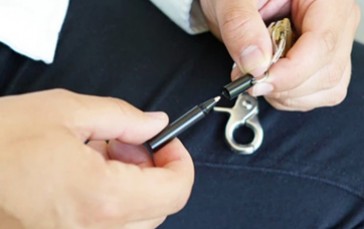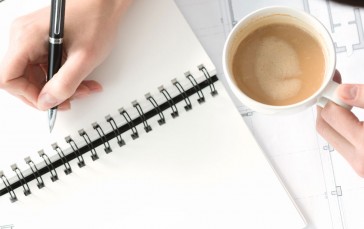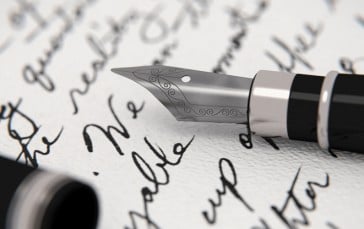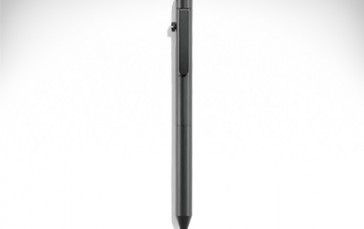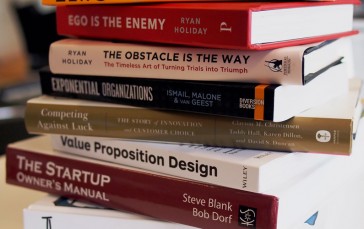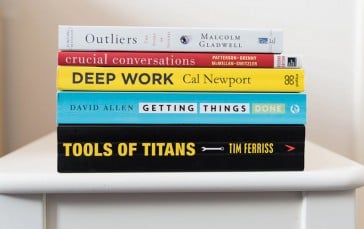How To Develop A Photographic Memory
If you’ve ever listed your theoretical Superhero powers, did a photographic memory make your final cut, alongside x-ray vision and the ability to fly? Yup, mine too.
How cool would it be to be able to notice and recall everything? With our information-overloaded lives it would certainly make things easier (I’ve still not been forgiven for forgetting THAT birthday) but can you really be like Bruce Wayne or Professor X and have a photographic memory?
A true photographic or eidetic memory is extremely rare and something an individual is born with. Just 1% of the US population is believed to possess an actual photographic memory whilst the rest of us mere mortals can only wish. But while you cannot become a true eidetic, the good news is you can develop a pin-sharp memory.
If you have always hankered after a photographic memory, then Gear Hungry has put together a totally memorable plan to power boost your instant recall. Our top 10 tips on how to develop a photographic memory won’t necessarily get you a headlining gig in Las Vegas, but it will be more than enough to impress your friends. And that’s something you won’t forget.

1. Brain Food
OK, we’re not going straight in for the David Blaine-worthy mind games and photographic memory tricks just yet but start with looking at keeping your grey matter healthy and on the ball. And that means helping to stave off memory loss (particularly as we get older) as well as turbocharging the brain cells we have.
One of the key foundations of photographic memory training is to feed your brain. And here we have some good news, especially for the gym or muscle-building fans amongst you – protein is essential to a pin sharp recall. Good sources of protein (which includes lean meat) contain amino acids that are directly linked to memory function.
Eggs should also take center stage of your brain diet as they contain choline, a vital nutrient that can help to boost short-term memory while omega 3s – found in oily fish such as salmon or sardines or supplements if you prefer – has been shown to reduce inflammation and blood pressure. They could also help to protect against memory decline.
However, it’s important to keep your diet low in saturated and trans fats as these have been linked to a poorer memory. And keep hydrated too as your hardworking brain tissue needs to be lubricated – drinking water, at least around 2 liters a day, will ensure everything is just swell.
2. Hit the Gym
Keeping with the brain health theme for a little longer, tip number two to develop a photographic memory is to get moving.
Did you know that exercising within four hours of learning something new helps you to retain the information? No, me neither but it just goes to show that exercise is not just for honing a buff body or improving cardio fitness, it can help to keep your brain power too.
Heart-pumping exercise – including HIIT and lifting as well as aerobic – keeps blood flowing to the brain and ensures your hardworking grey matter gets all the oxygen it needs to do its job. A healthy flow of blood to the brain can improve your memory and lead to better memory retention. It won’t necessarily give you the eidetic memory you dream of, but it is a healthy step in the right direction.
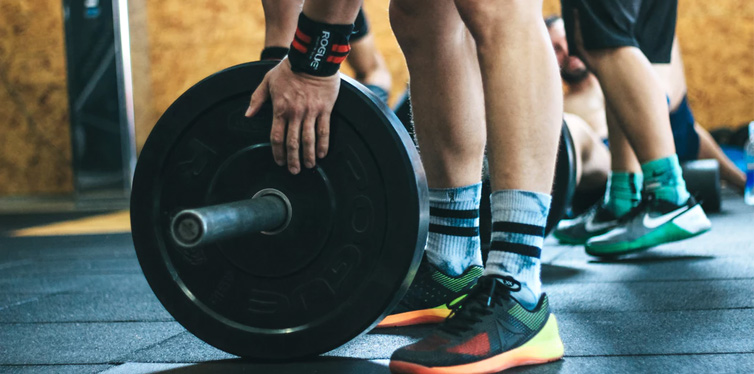
3. Brain Games
As well as a physical workout, to learn to have a photographic memory you also need to also put your brain through its daily paces.
When it comes to the old grey matter, the adage ‘use it or lose it’ is very apt – without challenging your brain it becomes lazy, sluggish and slow to recall. Two specific photographic memory training techniques are listed later on, but for starters add some simple, enjoyable brain games to your daily routine to keep your memory sharp.
Crosswords, word games and brain teasers all tend to be repetitive but that’s the point – creating a sense of order and focus while challenging and training your brain to recall, remember and react. There are many brain training and memory game apps such as Eidetic and Luminosity that can help in your daily quest to have the photographic memory of a superhero.
But don’t forget the humble card game too (the poker players among us know all too well how a good memory can boost our play) as they can also be cognitively demanding by requiring the good recall, strategy and focus under pressure. So get that poker set and choose the best cards.
4. Add to Your Brain’s Photo Album
With your brain well-fed, watered and exercised, we can now start to move on to the really good stuff…working on methods to get your memory clicking away like a camera.
One way to mimic an eidetic memory is to understand how the brain thinks and remembers and to give it a helping hand.
It’s said that the brain remembers in pictures – storing away subconscious visuals of the information it receives. If you meet someone and are told their name is Taylor, chances are you will later forget their name. But if you are told they are a tailor, your brain imagines a tailor, sewing or pinning a suit for example, and you are more likely to get this image and the word stuck in your mind.
So how does this help in photographic memory training? Consciously associate an image for the information you are trying to remember so that you have a visual picture of what you have just been told. The crazier the better – vivid images stick, just like vivid dreams – and work on it every day. Tell your brain a story in totally unforgettable images and you’ll soon have the memory set in stone.

5. Break Information into Bite-Sized Chunks
When first learning to have a photographic memory, it is tempting to rush at it and cram information in, hoping at least some of it will stick. Well, this didn’t always work for your college exams, so it’s unlikely to work now. When starting on your quest for something nearing an eidetic memory, you need to take it small and slow.
To get your brain playing the game, the key is to start slowly and break down the information up into short chunks to mentally absorb over several days. It’s the same method as learning a new language – spend a week memorizing 10 words, then add another 10 the next week and keep building it up.
Dedicate time each day and ‘repeat, repeat, repeat’ and you’ll steadily build up a solid bank of brain data that’s primed and ready for instant recall.
6. Create Your Own Memory Palace
With this memory training method – also known as the Method of Loci – we are taking the ‘think in pictures’ concept and totally running with it, so get ready for a crazy photographic memory training ride!
The Method of Loci is nothing new – it dates back to the Roman Empire – but boy, does it work and is one of the most powerful routes to a ‘photographic memory’ out there. It’s the mnemonic strategy that creates a pattern for the things you need to remember. To make the method work, remember the brain thinks in pictures so you need to visualize what you want to remember, such as items from your shopping list.
Here’s what to do:
- Think of a place you are very familiar with, such as your home
- Visualize a series of locations within this place, in a logical order – eg. route from the front door to your bedroom, taking in other rooms on the way. Notice things in each room such as furniture or standout pictures
- Now repeat this route in your mind, but this time put a visual representation of each word or a fact you need to remember in each room
- Get creative – turn the grandfather clock in the hallway into a giant carrot, imagine your bedroom rug is made out of spaghetti. You get the gist.
Your brain is now wired to this crazy, weird but totally memorable visual image of your shopping list, so as you walk around the grocery store, walk through your memory palace in your mind and you’ll have everything you need in your basket by the time you get to the cash till! You can also use this method to learn anything faster.

7. Get Enough Sleep
It’s been a late night and you’ve only had a few hours’ sleep before the dreaded alarm clock goes off, leaving you with a dazed feeling that can last all day. We all know that feeling, something that has been described as ‘brain fog’. You’re lucky if you can even remember where you’ve left your car keys let alone the minute detail of the night before.
One of our simplest ‘how to get a photographic memory’ tips is also one of the most effective – get enough quality snooze time to allow your brain to reboot. With the recommended eight hours’ sleep under your belt, you’re more likely to remember all those new faces and names than a sleep-deprived night owl. Not only that, but your refreshed brain’s internal filing system will help you retrieve more facts and memories and effectively store all your new ones away. Sleep well, take naps, and you can ensure your new photographic memory tricks don’t just disappear at midnight.
8. Don’t Skip Your Morning Coffee
That early morning caffeine hit can also play a part in your photographic memory training – now that is music to our ears. Just two cups of quality coffee a day can help boost short-term memory by stimulating brain function and helping to keep you alert.
Ditch the decaf coffee and enjoy the flavor of a full roast coffee bean, knowing your favorite hot beverage is having a positive effect on your brain as well as tasting great, is quite literally a smart move. Just don’t overdo the caffeine and take it easy on the sugar and cream!

9. The Military Method
Now to an awesome technique for developing a photographic memory that would not be out of place in a spy movie – the Military Method. As its name implies, it’s a system that has been used in the forces for many years and has an element of mystery about it. Whether it works is open to debate and be warned, it requires real dedication. Oh, and a dark room, a flashlight and a month of your time.
The aim is to imprint words that are in front of you on to your mind, so when you need to recall them, you recall the words as you see them. Here’s how – get the information you need to recall in paragraph form on a piece of white paper then sit in a pitch-dark room, with the paper in front of you. Flick the flashlight on and off for around 15 minutes while looking at the words on the paper. If you do this daily for a month, it appears you will be able to recall on command, the words on the paper in your mind. Hmmm. Although it has worked for the military so if you’re keen for a photographic memory to be proud of, give it ago.
10. Meditation
And finally, no matter how much you practice our top tips for a photographic memory, if your mind is unfocused and distracted, you’ll struggle to get it right. However, work in daily meditation or mindfulness sessions and you’ll soon have a calmer brain that’s ready to absorb anything you throw at it.
Photographic memory training needs focus, discipline and repetition and meditation can not only clear your mind but also help you train your thoughts by slowing down the way you process information. It can be as simple as taking a few minutes each day to run through a meditation routine. Or you can be mindful ‘on the hoof’ when your trainee photographic memory starts to get a bit unruly.
So, take a deep breath and embrace your inner Zen dude for a calmer route to a total recall.


